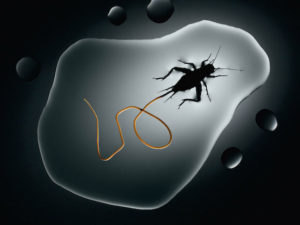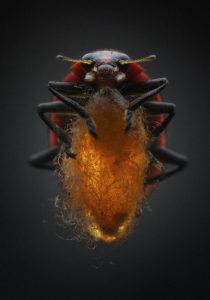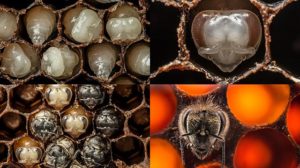This week I had the unique opportunity to attend a talk by national geographic magazine’s acclaimed photographer Anand Verma at the National Center for Biological Sciences in Bangalore.
It was an amazing talk that featured Anand’s work for the National Geographic magazine, some of it was even unpublished work. He spoke about how he was training to be a biologist at Berkeley and took up photography as a summer job, one thing led to another and he found that he could do the most fun parts of a biologist’s job while being a photographer.
He talked about how his projects have been about abstract even revolting topics such as host manipulating parasites and bats*. And how his job is to use beauty as a weapon against apathy. The power of the image is to hold the viewer’s attention and make him realise in those few precious seconds that facts matter, and the world is more beautiful than what any of us can imagine.
Photography is not just flipping out your camera and taking a photo. A lot of research goes into each assignment, with months of background reading and observing the subject in their habitat, so much so that you know how it will react in a given situation so that you can place your equipment accordingly. Each assignment is like a postdoc for him.
He found that photography is not just a medium of dissemination of information but can also act as a means of discovery. Using his skills and equipment he was able to photograph young honeybees as they developed into bees from their larvae, the process showed newly formed bees exchanging oral fluids, the scientists had not known that this exchange happened at such an early stage of a bee’s life.
After the talk I went up to him for an intimate question answer round and asked him that he has been acting as a conduit of dissemination of information between scientists and the general public, what would his advice be to the scientists to get better at communicating?
He said that the key to communication according to him is knowing your audience, most scientists are trained to communicate amongst themselves through papers, conferences and seminars. So when they are faced with a new audience such as high school students they are stumped. They end up using their subject jargon and lose the attention of their audience. It is important to know what details are important and what are just additions. Once you figure that out, remove all the distractions that are not needed so that the audience can focus on the important details. He used a story on bats that he has been covering as an example. When he talks about that story he gauges the audience first, so if only 5% of the audience is ‘bat-scientists’ he would leave out most of the technical details, but it is a dynamic process. Suppose in his presentation he is showing a photograph which is bound to hold the attention of the audience for the next 5 seconds he may add certain titbits that the bat scientists would truly appreciate but at the same time he won’t lose the rest of the audience.
I have tried to present an interpretation of the talk which may be helpful to us as computer scientists. If you would like to know the details of his works that he covered in the talk feel free to ping me. The talk surely converted me into a NatGeo magazine subscriber.
*Below I present some representative images of Anand’s work, all rights of these images belong to Anand and the national geographic magazine.



This website definitely has all the info I needed concerning this subject and didn’t know who to ask.
constantly i used to read smaller posts that also clear their motive, and that is also happening with this article which I am reading at this time.